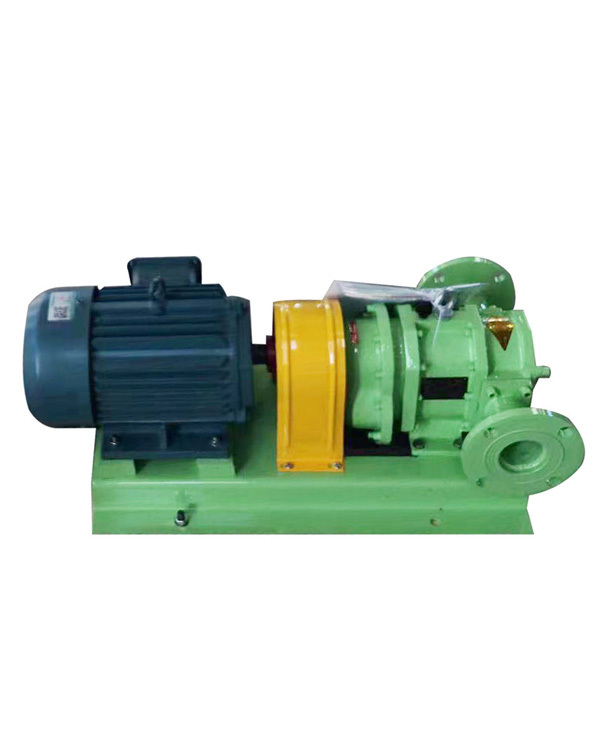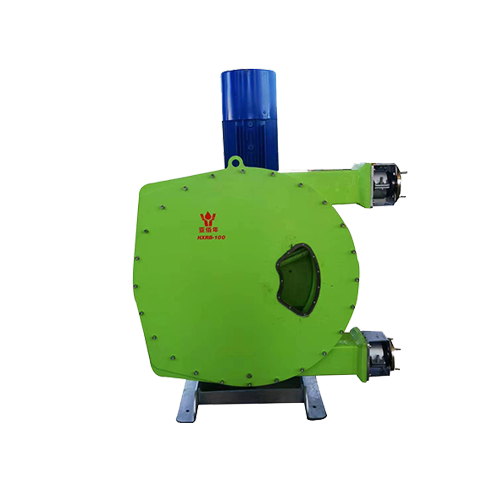The Essential Contribution of Rubber Lobe Pumps to Modern Wastewater Treatment Plants
May 12,2025

The Essential Contribution of Rubber Lobe Pumps to Modern Wastewater Treatment Plants
Table of Contents
- 1. Introduction to Rubber Lobe Pumps
- 2. Understanding Wastewater Treatment Processes
- 3. The Role of Pumps in Wastewater Treatment
- 4. Advantages of Rubber Lobe Pumps in Wastewater Treatment
- 5. Operational Mechanism of Rubber Lobe Pumps
- 6. Applications of Rubber Lobe Pumps in Wastewater Treatment
- 7. Future Trends in Pump Technology for Wastewater Management
- 8. Conclusion
- 9. Frequently Asked Questions (FAQs)
1. Introduction to Rubber Lobe Pumps
Rubber lobe pumps have emerged as a critical component in the effective management of wastewater treatment processes. With their unique design and operational capabilities, these pumps are revolutionizing how treatment facilities handle various liquids. By utilizing a series of lobes, these pumps ensure a gentle yet efficient transfer of fluids, making them ideal for handling sensitive materials often found in wastewater.
2. Understanding Wastewater Treatment Processes
Wastewater treatment is a process designed to remove contaminants from water that has been used in various domestic, industrial, and agricultural applications. The fundamental goal is to produce an effluent that can be safely released back into the environment or reused. This complex process typically involves several stages, including:
- **Preliminary Treatment**: Removal of large debris and solids.
- **Primary Treatment**: Settling of solids and floating materials.
- **Secondary Treatment**: Biological processes to degrade organic matter.
- **Tertiary Treatment**: Further polishing to remove remaining impurities.
Each of these stages demands reliable and efficient pumping systems to facilitate the movement of liquids and solids, underscoring the importance of pumps like the rubber lobe pump.
3. The Role of Pumps in Wastewater Treatment
Pumps are the backbone of wastewater treatment plants. They perform various functions, including:
- **Transporting Sludge**: Moving sludge from one treatment stage to another.
- **Feeding Chemicals**: Delivering treatment chemicals throughout the process.
- **Distributing Effluent**: Ensuring proper flow during the final discharge phase.
The reliability and efficiency of pumps directly impact the overall performance of wastewater treatment systems. Therefore, selecting the right type of pump is crucial.
4. Advantages of Rubber Lobe Pumps in Wastewater Treatment
Rubber lobe pumps offer numerous benefits in wastewater management, making them a preferred choice for many treatment plants.
4.1 Durability and Resistance
Rubber lobe pumps are specifically designed to withstand harsh operating conditions. The use of durable rubber materials provides excellent resistance to abrasion and corrosion, ensuring longevity and reducing the need for frequent replacements. In an environment where harsh chemicals and abrasive solids are present, their resilience is paramount.
4.2 Efficiency and Performance
One of the standout features of rubber lobe pumps is their ability to maintain a consistent flow rate, even under varying conditions. This efficiency translates to lower energy costs and enhances the overall performance of wastewater treatment processes. Additionally, their design minimizes pulsation, which helps to preserve the integrity of sensitive materials being pumped.
4.3 Maintenance and Repair
Rubber lobe pumps require minimal maintenance compared to other pumping technologies. Their straightforward design allows for easy access to components for routine inspections and repairs. This ease of maintenance contributes to reduced downtime and lower operational costs.
5. Operational Mechanism of Rubber Lobe Pumps
Understanding the operational mechanism of rubber lobe pumps is crucial for optimizing their use in wastewater treatment. These pumps operate on a positive displacement principle:
- **Lobe Rotation**: As the lobes rotate, they create a vacuum that draws liquid into the pump chamber.
- **Trapping Fluid**: The lobes trap the fluid between them as they rotate, effectively sealing it within the chamber.
- **Fluid Discharge**: The rotation continues until the lobes come back around, forcing the trapped liquid out through the discharge port.
This method allows for a gentle transfer of fluids, making rubber lobe pumps suitable for handling sensitive slurries and sludges without causing shear damage.
6. Applications of Rubber Lobe Pumps in Wastewater Treatment
Rubber lobe pumps find a variety of applications within wastewater treatment plants, including:
- **Sludge Transfer**: Effectively moving thick sludge from primary to secondary treatment stages.
- **Chemical Injection**: Delivering coagulants, flocculants, and other chemicals necessary for treatment.
- **Filtration Systems**: Assisting in the backwash processes of filtration systems to maintain efficiency.
These applications highlight the versatility and reliability of rubber lobe pumps in ensuring efficient wastewater management.
7. Future Trends in Pump Technology for Wastewater Management
As technology continues to evolve, the wastewater treatment industry is witnessing significant advancements in pump technology. Future trends include:
- **Smart Pumping Systems**: Integration of IoT devices for real-time monitoring and data analysis, leading to better operational efficiency.
- **Sustainable Materials**: Development of more eco-friendly materials for pump construction to minimize environmental impact.
- **Enhanced Energy Efficiency**: Innovations aimed at reducing power consumption and improving energy efficiency in pumping operations.
These trends will not only enhance the performance of rubber lobe pumps but also contribute to more sustainable wastewater management practices.
8. Conclusion
Rubber lobe pumps play a vital role in modern wastewater treatment plants, offering numerous advantages in durability, efficiency, and ease of maintenance. Their unique operational mechanism ensures the effective transfer of various types of fluids, making them an indispensable component in wastewater management. As the industry moves towards more innovative and sustainable practices, the importance of these pumps will only continue to grow.
9. Frequently Asked Questions (FAQs)
What are rubber lobe pumps?
Rubber lobe pumps are positive displacement pumps designed with lobes made from durable rubber materials, allowing for efficient and gentle fluid transfer.
How do rubber lobe pumps work in wastewater treatment?
These pumps operate by rotating lobes that create a vacuum to draw fluid into the pump chamber, trapping it until the lobes rotate back to discharge the fluid.
What are the benefits of using rubber lobe pumps?
Benefits include durability, resistance to harsh conditions, efficient performance, and ease of maintenance.
Where are rubber lobe pumps commonly used?
They are commonly used in sludge transfer, chemical injection, and filtration systems in wastewater treatment plants.
What trends are shaping the future of pump technology?
Trends include the integration of smart technology, sustainable materials, and energy-efficient designs aimed at improving wastewater management practices.
Contact Us
E-mail :
sales@yaquanpump.com
service@yaquanpump.com
Phone/WhatsApp:
+44 7301702546
+63 9452052801
Address:
Room B208, Building 2, North Hongqiao Songri Center, No.215 Gaochao Road, Jiading District, Shanghai









